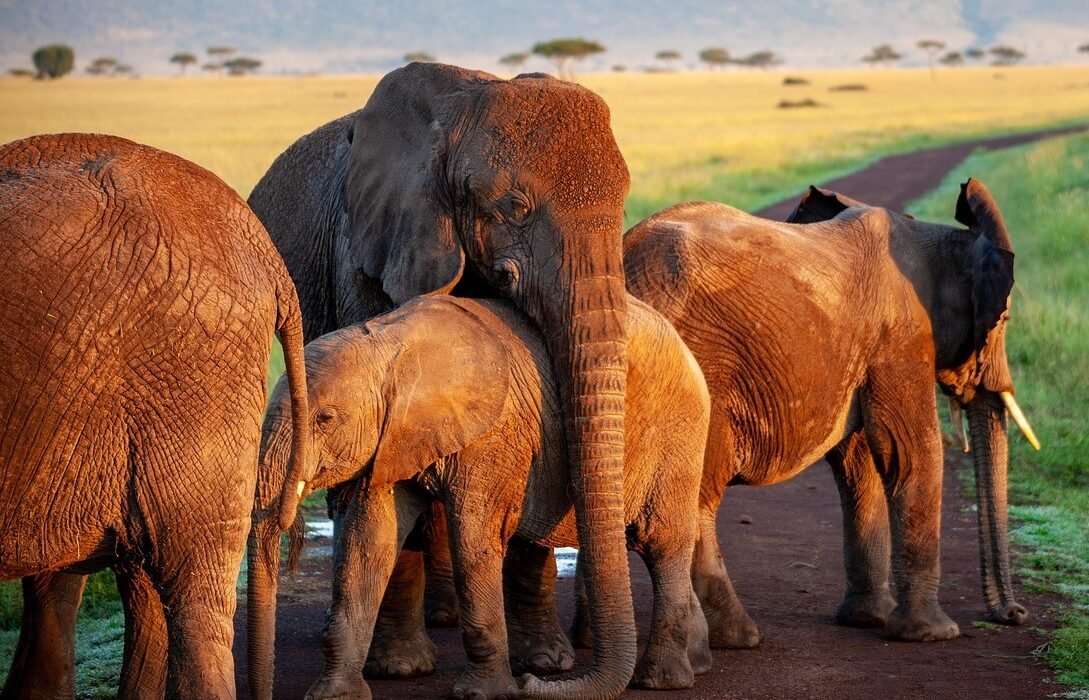Researchers used AI to sift through calls (called “rumbles”) made by wild elephants and matched up callers with receivers by names. They found that some of the rumbles contained a component that was name-like and that elephants recognized when they heard it replayed. Unlike dolphins and parrots, which use names that involve imitation, elephants’ rumbles appear to carry identifying information about individual members of their groups.
Humans have names for themselves
Elephants live in complex family groups, social networks, and clan structures that are similar to the human world, and researchers think their evolved need to distinguish one another might have led them to develop arbitrary vocal labels for members of their herd. These “names” are one part of the low rumbles that elephants use to communicate over long distances across the savanna.
Using artificial intelligence, researchers isolated the rumbles that contained an individual’s name and played them back to wild herds. On average, the elephants responded much more energetically and with their ears flapped and trunk lifted to recordings of other herd members calling them by name than they did to calls made by strangers. They also moved toward the calls that were addressed to them and ignored those that weren’t.
It’s not clear, however, whether elephants recognize their names as a stand-alone call or if they’re embedded in a larger rumble that conveys multiple messages, including age, sex, emotional state, and behavioral context. Mickey Pardo, a Cornell University biologist who was involved in the research, says more data is needed to isolate and test the rumbles’ specific components.
Pardo and his team analyzed hundreds of calls between 101 callers and 117 receivers in two wild herds. Although herds have been observed addressing members of their own group by name, this study marks the first time that researchers have documented an animal inventing arbitrary identifiers for its friends and family that don’t involve imitation.
Dolphins have names for themselves
Elephants, like dolphins and parrots, communicate with other members of their species through a variety of vocal sounds. They’re able to convey information about their age, sex and emotional state through these calls. But they’re also able to address other members of the herd by name, according to a new study published in Nature Ecology & Evolution.
Researchers from Colorado State University and several wildlife nonprofits tracked herds of African savannah elephants in the Amboseli and Samburu national parks in Kenya. They used a machine learning algorithm to analyze over 625 calls and identify 119 unique elephant names. They then verified the model’s accuracy by playing recordings of calls that were addressed to particular elephants. Those elephants approached the playback more quickly and vocalized more loudly than they did when they heard a call that wasn’t intended for them, suggesting they recognized their names.
The findings are a big step in understanding how nonhuman animals use language, and may one day help researchers develop better conservation strategies for the endangered animals. Unlike dolphins and parrots, who imitate the signature calls of the members they’re addressing, the elephants in the study appear to be identifying their peers with arbitrary sounds, similar to how humans use names for themselves. Much more data will be needed to determine the structure of these arbitrary names and confirm whether different callers share the same name for the same elephant.
Parrots have names for themselves
Unlike dolphins and parrots, which call each other using clicks or whistles, wild African elephants use a harmonically rich, low-frequency sound that scientists think they refer to as their names. Known as “rumbles,” these calls allow herd members to communicate with one another over long distances. This ability is particularly important for herds that split up to find food or water. The new research, published today in Nature Ecology & Evolution, suggests that these rumbles contain identifying information about the recipient, just like names do for humans.
Poole and her colleagues listened to recordings of elephant rumbles, from herds at Samburu and Amboseli national parks in Kenya, and used machine learning to see whether the sounds contained individual vocal labels that indicated an elephant’s name. They found that a computer model correctly predicted the receiver of a call 28% of the time when it was fed meaningful data. That’s a much higher accuracy rate than would be expected by chance alone, the researchers say.
The researchers also played back the naming sounds to herds in the field and found that the elephants recognized them. They responded enthusiastically and moved toward the calls that they knew were meant for them, but ignored those addressed to other herd members. They also reacted differently to the rumbles that were meant for their friends than they did to those meant for strangers, suggesting that the herd members can distinguish between the identifying sounds in the rumbles.
Elephants have names for themselves
Researchers from Colorado State University and nonprofits Save the Elephants and ElephantVoices have used machine learning to determine that elephants have names for themselves, the first time nonhuman animals have been shown to do so. The study, posted as a preprint on the bioRxiv scientific repository, analyzed recordings of African bush elephants in their natural environment.
Like humans, animals communicate using a variety of vocalizations, but most of their communication is in the form of deep, rumbling sounds that can travel up to two kilometers. The scientists identified which rumbles carried identifying information for each elephant by analyzing a library of recordings made by Dr. Poole and her colleagues since 1986 in Amboseli National Park and Samburu National Reserve in Kenya.
The rumbles that were labeled as identifying calls were more similar than the rumbles labeled as meaningless, suggesting the calls carry a unique identifier for each individual. They then played back the identifying rumbles to the elephants and observed their behavior. The elephants responded much more strongly on average to playbacks of rumbles that were originally addressed to them than to playbacks that were intended for someone else.
The elephants approached the speakers more quickly, vocalized more, and produced more rumbles than when they heard a rumble that was not directed at them. This suggests the elephants recognize the rumbles as their own and use them to identify members of their group. The results suggest that elephants have a similar way of communicating with members of their group, as other species such as dolphins and parrots do, by mimicking each other’s individual calls.




